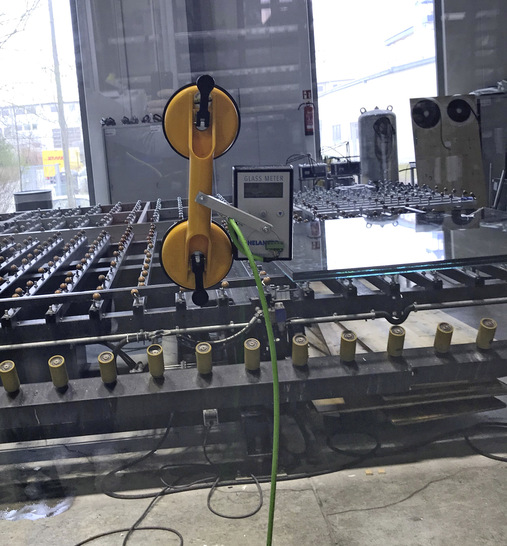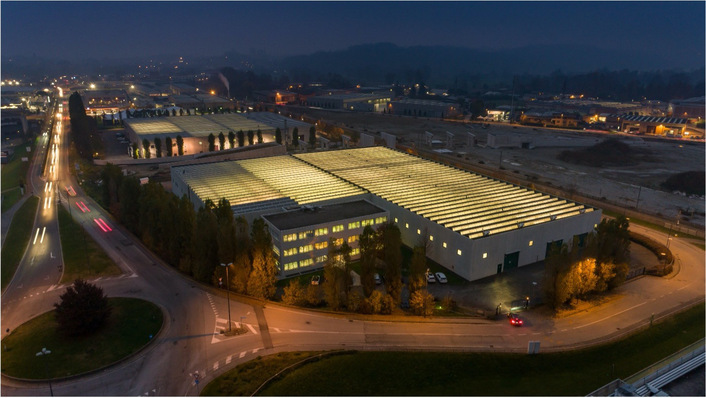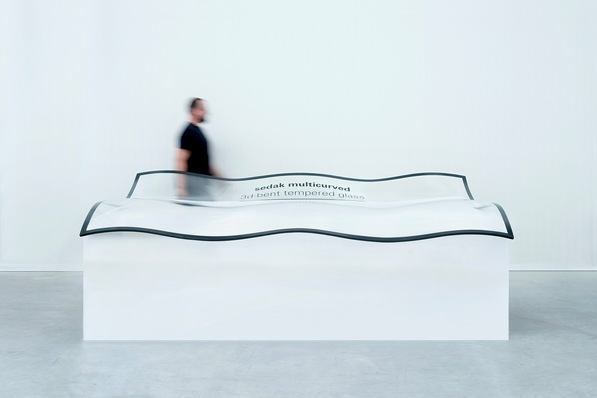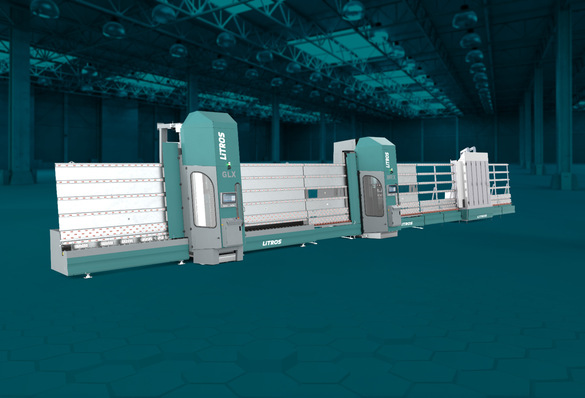As the size of insulating glass increases, so do the challenges in manufacturing it. One of these is filling the space between the panes with inert gas for an increased insulating effect. Some of these insulating glass products cannot be easily processed on gas presses due to the special constructions or other reasons, so the gas filling has to be done manually.
For doing so, the filling device is connected to the gas space by means of hoses and probes. The probes are inserted through holes in the frame or through existing holes in the corner connector.
The overpressure created when injecting the gas (argon, krypton, xenon or similar) is kept low with the help of a second probe with active suction and the return to the filling device. The accepted pressure here is a few millibars. With larger formats (from 2.5 × 2.5 m), even a very low pressure would be enough to deform the panes.
Especially with triple pane structures, this can lead to the middle pane bending in one direction or the other without any particular pressure build-up being measurable. Since the two chambers influence each other, even less than 0.2 mbar can pose the risk of two glass panes coming into contact. This must be avoided at all cost, as such contact can lead to surface defects and even glass breakage.
So how can large-format IG units be manufactured safely?
To ensure that such insulating glass units can still be manufactured safely, Helantec has equipped its existing Rapide L900 filling line with a distance sensor, which continuously monitors the two spaces between triple insulating glass units.
"We did not want to change the pressure sensors we had been using so far, so that we could continue to be flexible and fill small and rigid formats in the future," says Helantec managing director Gregor Witrofsky. "By adapting the software, our systems can work either by pressure detection or by distance measurement."
See also: Panoramic glazing is becoming increasingly popular with home owners
For the distance measurement of the panes, a solution was developed for Silatec (www.sicherheitsglas.de) that allows continuous measurement, for which a distance meter with a suction cup is placed in the centre of the pane where the greatest deflection occurs. As soon as the distance between the glass panes changes, the output of the pump is adjusted accordingly. This is done independently for both gas gaps.
What does Helantec's customer say?
The customer is satisfied with Helantec's new application. "Now we can be sure that the glass panes do not touch each other," confirms Silatec Managing Director Christoph Hahn. "None of the previously available devices based on pressure measurement could ensure this permanently."
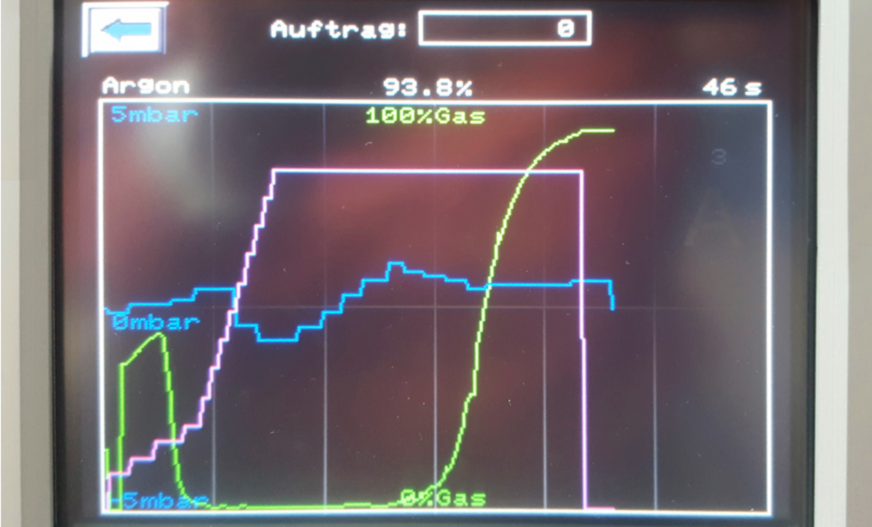
Helantec
In the course of development at Helantec, it became apparent that this measuring method has further advantages. Since the distance is measured to an accuracy of 0.1 mm, the glass panes can maintain the desired distance permanently, so that only the volume that is actually present is filled with gas. Any bulging inevitably leads to an increase in volume with an associated increase in gas consumption.
Also interesting: 2022 will be the International Year of Glass
Christoph Hahn: "The bottom line is that with the Helantec distance sensor we can not only ensure that the panes do not touch each other. The optimal position of the glass panes also ensures the shortest filling time with the lowest gas consumption."
Especially with krypton as the filling gas, the use of the new filling method pays off quickly. The main focus, however, is on avoiding glass damage during production. Every glass that does not have to be repaired or produced again saves time, effort and resources.
For more articles like this one, make sure to have a look at our 2021 Glass Special.







